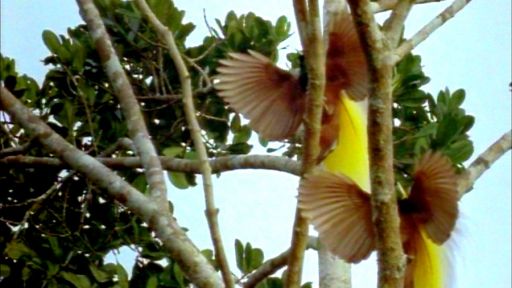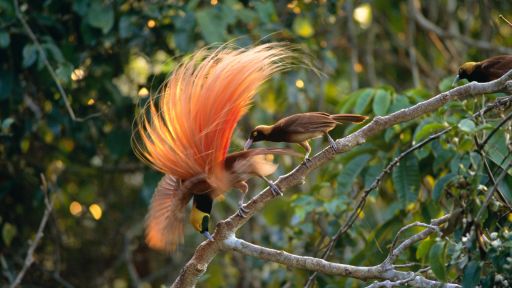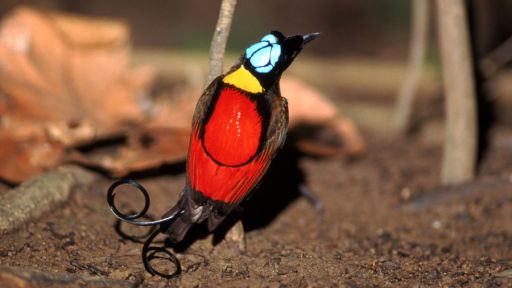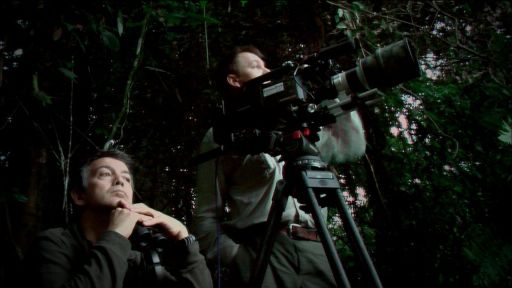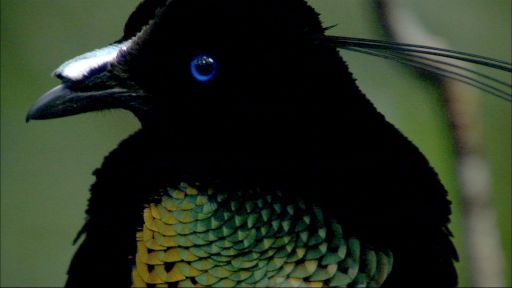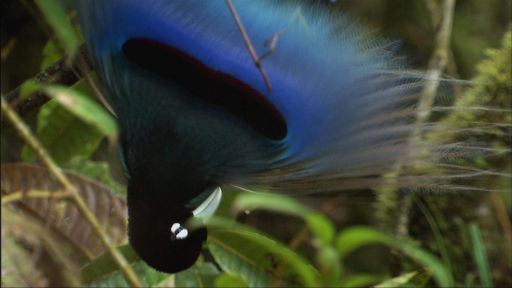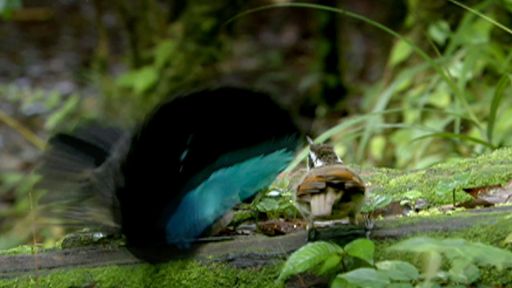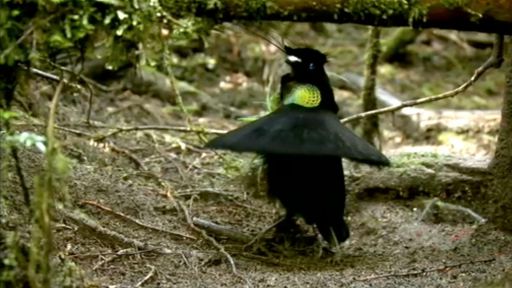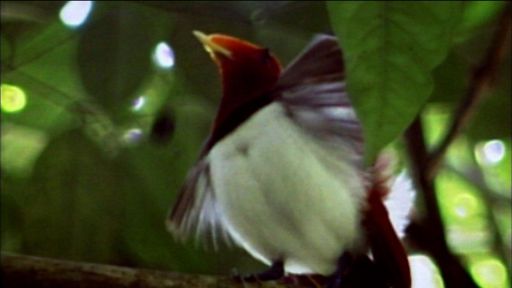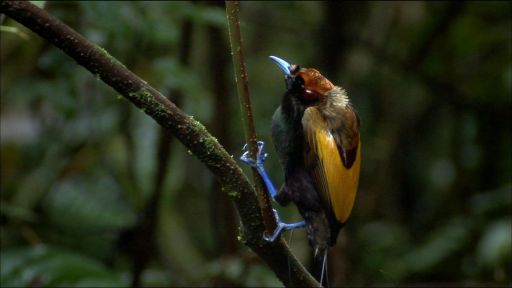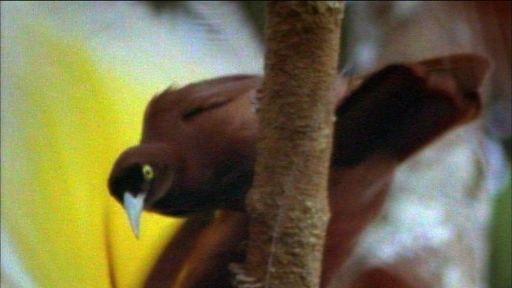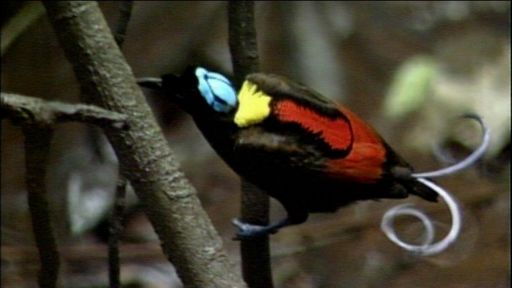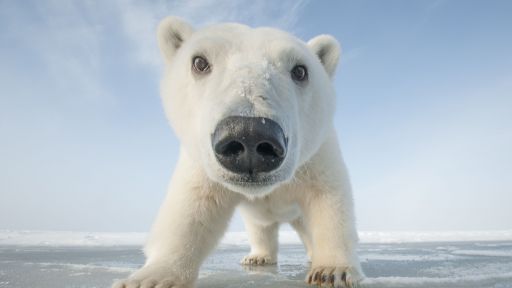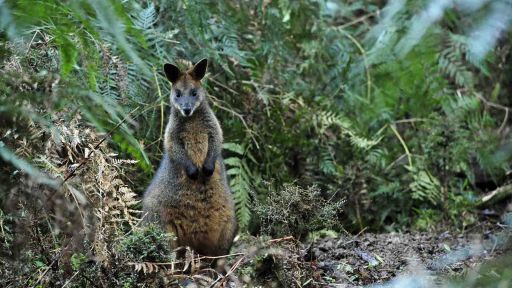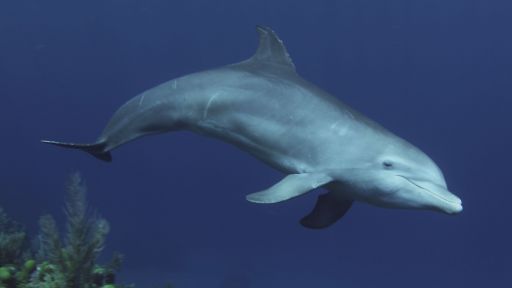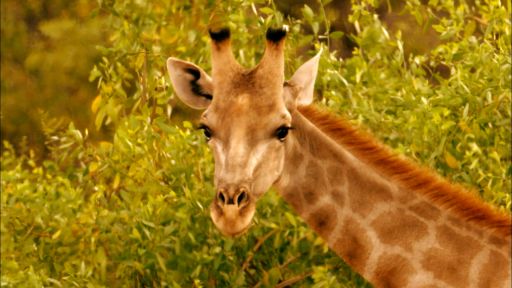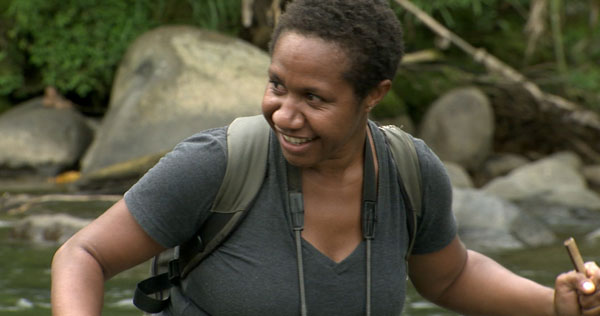
Miriam Supuma’s honors research was on PNG forest dynamics including mortality, recruitment, and growth rates of trees within 4.2 ha of plots at Crater Mountain Wildlife Management Area. In addition to rainforest demography, Miriam studies wildlife ecology and conservation and is currently researching traditional use and valuation of wildlife, especially as it relates to bird species used for adornment and trade by highlands people. She wants to understand the implications of these practices on wild populations and search for ways to make cultural practices sustainable. Upon returning to PNG with her Masters Degree, Miriam assumed a leadership role with the previous WCSPNG program as Co-Director and then became a co-founder of the Papua New Guinea Institute of Biological Research (PNGIBR). She was featured in Birds of the Gods.
You spent three months documenting birds of paradise species in New Guinea for the film. What were some of the biggest challenges you encountered during this expedition?
The weather did not always agree with us since it was raining most of the time. Not only from the filming prospective, but also having to walk a muddy track that was often knee-high.
Also, most Birds of Paradise are more active during early dusk and early dawn. If it was raining there were no Birds of Paradise (BOPs) to see and no filming to do —so this also prolonged the whole project.
Birds of paradise live in different areas of the island and at varying altitudes. What are some of your methods for tracking the different birds of paradise species? What makes certain species harder to find than others?
Many researchers have documented the ecology and distribution of birds in the past on the Island of New Guinea. For example, Bruce Beehler, Thane Pratt, and Dale Zimmerman, have written a bird guide titled “Birds of New Guinea.” Jared Diamond’s study on birds in New Guinea gave rise to the theory of “Island Biogeography.” Specifically on BOPs, Bruce Beehler and Clifford Frith wrote a book titled “Birds of Paradise; Paradisaeidae.” I believe also that, Mary LeCroy documented BOPs in captivity and in the wild.
I met Mary LeCroy in New York back in 2004. She was the curator of the bird collection at AMNH at the time. Mary took us (my PNG colleagues and I) through the bird collection of PNG. It was very fascinating to see some of the BOP collections dating back as far as the 1800s. This highlighted to us the importance of museums in education (ecology and history).
Between 2001 and 2006 two researchers from the USA travelled to Papua New Guinea to research the behavior of the Parotias (Edwin Scholes) and Bower Birds (Brett Benz). This contributes further to our knowledge of the Birds of Paradise.
Secondly, local knowledge is very important. Local people (especially those who live in remote places of PNG, and rely on the forest for survival) have a good idea of the distribution of the BOPs, their leks (the specific tree or trees the birds prefer to display on), what they like to feed on, and when they are most active during the year.
Papua New Guinea’s human population is increasing. The country’s population growth rate is about 2.2 % per year. This increase adds pressure to our forests. People clear forest for subsistence gardening, and hunt heavily for animals for nourishment and/or for trade. The sale of BOPs feathers as well as marsupials (their skins or the live animals) is one way for local people to get an income. Forest clearing and hunting for beautiful bird of paradise feathers make them rarer and harder to find. Traditionally, Papua New Guineans (especially in the past) used the beautiful feathers not only for adornment for special occasions, but also as payment for a bride (mostly in the highlands region). So the feathers had value and were used for trade.
The Blue BOP (Paradisaea rudolphi), Black Sicklebill (Epimachus fastuosus), Superb BOP, and the Magnificent BOP are generally hard to find. In most montane forests, it is hard to see the Blue BOP. I find the Black Sicklebill to be very mysterious. You’d be very lucky if you spotted one in display in early dawn. I envy Sir David Attenborough for having sighted this bird in display. We (Robin Smith – the cameraman and I) tried but were unsuccessful. We only saw it about 300 meters away on a tree, not displaying, on an early dawn morning.
Did you have a favorite bird of paradise sighting during your expedition for the film?
Yes, the Blue Bird of Paradise and the Lawes Parotia (Parotia lawesii) because of their intricate dance moves.
What about it made it so rewarding?
With the Blue BOP, the film crew attempted to film it for couple of days but were very unsuccessful. The first couple of days it was raining. The days in between, the Blue BOP was sighted but did not display.
Then one early dawn, we got ourselves out of bed at 3am, the same routine, and got into the truck owned by a local to travel 3 km away.
When we hopped into the truck, the front lights had a problem and weren’t functioning. So a local man got out with a torch and we followed him slowly in the truck. I was thinking to myself, we’ll never make it at this rate. We were either going to get there very late or it would start raining again when we got there.
We got there eventually and hiked an hour in semi darkness, crept into the hide, and waited for an hour. And when the Blue BOP came out to display, we were all very ecstatic. Off course we remained as calm as possible even though we were filled with excitement– we didn’t want to disturb the bird.
Birds of paradise play a significant role in tribal culture. The film mentions your work with local communities to help curb hunting bird of paradise without sacrificing cultural practices. What was learned or accomplished as a result of your work with these communities?
The PNG Institute of Biological Research conducts a survey on BOPs and other wildlife artifacts used as adornment at the Goroka Showevery year on the 16th of September, coinciding with the celebration of Papua New Guinea’s Independence.
We have learned many things from the people participating during the celebration. We are starting to see that we are interviewing some of the same people who remember us from previous surveys. Some have told us that they are using the same traditional adornment from the last time we saw them. Others mentioned that they have purchased new ones. Interestingly, we encountered a handful of people in the 2010 survey saying that they had to hire their feather set for the celebration because they didn’t have their own. They had to pay between K500-K1000 or USD$180-350 to rent the feathers. We see that the survey has made the participants more aware of the need to keep their traditional adornments safe.
Interestingly though, a few people have kept their traditional adornments passed down from 3-4 generations, and this is pretty special. When asked how they kept the feathers in good form, they say they usually store them in bamboo tubes above their fire place or in suitcases.
The whole idea of the survey is not only ensuring that these beautiful birds are still around 50 odd years from now but also appreciating how intertwined PNG’s biological diversity is with our culture as well as food security. We are a country of many languages (over 800) and thus many cultural beliefs.
You are the co-director of the Papua New Guinea Institute of Biological Research. For our viewers, its mission is “to effectively contribute to the conservation of Papua New Guinea’s flora, fauna and ecosystems to ensure a biologically sustainable future.” What kinds of research and education programs does the organization oversee?
Our organization oversees three key programs:
1) Research
a) Critically Endangered (IUCN) Long Beaked Echidna (Zaglossus bartoni)- research into its feeding, breeding ecology as well as anthropogenic activities that threaten its population in the wild
b) Nest Box Project- seeing if arboreal species will use nest boxes as a replacement for rare tree cavities after those trees with cavities have been cut down by hunters or logging
c) Hunting Project- surveys conducted in remote villages documenting what wildlife species are hunted by locals. This helps us to understand what species are hunted the most. If there are certain species currently listed by International Union for Conservation of Nature (IUCN) as threatened, we work closely with the locals to draw up management plans to ensure food security is addressed as well as the conservation of species.
d) Traditional adornment (or Bilas) survey as featured on the documentary
e) Biodiversity Monitoring – at the Mt Gahavisuka Provincial Park
f) Research into the Ground Cuscus (Phalanger gymnotis) and the Bulmer’s Fruit Bat (Critically Endangered) need funding.
2) Training
a) We hold month-long annual training courses for 25 to 30 PNG university students and biology professionals teaching field techniques, project design, statistics and report write-up.
b) From these courses we identify promising students and take them on as interns for a two year period mentoring them through their Honours research projects. The Honours degree comes between a Bachelors and a Masters degree in our education system.
c) We then encourage these students and also our staff members to continue graduate studies overseas. Currently we have a student doing her Masters Degree at the University of St Louis, Missouri (USA) and two staff members pursuing
d) PhD degrees in Australia (on the Long Beaked Echidna and Honey Bees )
3) Awareness
a) We give public talks about the environment e.g World Environment Day, June 5th
b) We give guest lectures at Universities
c) Our work has been featured not only in “Birds of the Gods” but also on the “Lost Land of Volcano.” The latter features one of my colleagues Muse Opiang who along with Kris Helgen of the Smithsonian Institution discovered new species, the giant wolly rat and the Bosavi silky cuscus.
Which bird of paradise species are currently in need of protection and what about them puts them most at risk?
In PNG, all Birds of Paradise are protected under CITES (Convention on the International Trade of Endangered Species). This means that the BOPs cannot be exported overseas or traded locally. Having said this, Papua New Guineans continue to sell the BOPs locally, either live birds or on most occasions their feathers. The regulation is not stringent. Papua New Guineans who do hunt BOPs for one reason or another are probably unaware of the CITES treaty.
Under the IUCN, most Birds of Paradise are labeled Least Concerned. One reason could be due to the fact the most male juveniles can be easily mistaken for females. When the juvenile males mature they acquire their full attractive plumage. Juvenile males can often mate with mature females and thus continue the population even if it appears that male BOPs are hunted quite a bit. This explains why the populations were able to survive during the 1800s when they were hunted and sold to Europe for their plumes.
The species that are threatened under IUCN, are the following:
• Blue BOP (featured in documentary)
• Black Sickle Bill (featured in Sir David Attenborough’s earlier documentary)
Others not featured in the documentary are:
• Ribbon Tailed Astrapia (Astrapia mayeri)
• Emperor Bird of Paradise (Paradisaea decora) considered
• Wahnes’s Parotia (Parotia wahnesi) considered Vulnerable under IUCN due to its restricted range
Their populations are said to be declining. One of the reasons for their declining trend is that they have a restricted range of distribution. Research is important for understanding how these species behave in the wild especially now that we are faced with climate change, human population increase, hunting pressure, and pressure on their natural habitat from forest clearing.
You were born and raised in New Guinea. You mention in the film that your love of nature began in a small village school in the mountains. Did you know much about birds of paradise as a child? Did you have a favorite?
I spent the earlier part of my childhood on the coastal plains of Western Province (Morehead District), along the border of PNG and Iran Jaya a part of Indonesia (or what is now commonly called Papua).
It is a place abundant in wildlife; mammals, birds, and fresh water fauna. Some of my earliest memories include sitting in the back seat of the truck with my dad hunting for deer (deer is an introduced species). The area I grew up in was a resting place for many birds species during migration to and from Australia. I had a general curiosity about animals then. I recently became very interested in the BOP because of our project on wildlife use in cultural ceremonies.
Ornithologist and PNGIBR-founder Paul Igag, who was also featured in the film, died since the making of the film. Would you care to share any thoughts on his work and your friendship?
My late friend and colleague, Paul Igag left us prematurely on Friday 29th October 2010. He was just 46 years old. Paul was well-liked by everyone who was fortunate enough to have met him. Uncle Paul, the affectionate name we gave him, for being the older member of the team was a very humble man with a wonderful sense of humor accompanied with an infectious laughter. In addition to this, he was one of the most genuine and kind-hearted people I have ever met.
Late Paul, during his career accompanied many international bird researchers to remote field expeditions and had the ability to move with ease between the western and PNG culture.
Paul’s research interest was the Vulturine Parrot (Ptsittrichas fulgidus) and the Palm Cockatoo (Probosciger aterrimus)– both are large parrots. Paul successfully completed his Masters thesis from the Australian National University, Australia in 2002. His thesis was about the reproductive biology of large parrots in Papua New Guinea. He had many contributions to conservation in PNG, training young biologists, as well as scientific publications in peer reviewed journals.
People around the globe have written to express their sorrow http://paul-igag.virtual-memorials.com/
In honor of PNG’s first ornithologist, PNGIBR has set up a Paul Igag Scholarship Fund to train more national biologists as this is something Paul was very dedicated to.
The PNGIBR is a non-profit non government organization with 100% PNG national staff composition. You can visit our website www.pngibr.org to find out more. We work in partnership with a US based non-profit organization called Green Capacity; donations for our cause can be made through this organization. Donations to PNGIBR made through Green Capacity to fund studies into biological research in Papua New Guinea or to be put towards the Paul Igag Scholarship Fund are US tax deductible and can be made via our website.
Thank you so much for your interest in our country, our amazing wildlife, and our organization.

